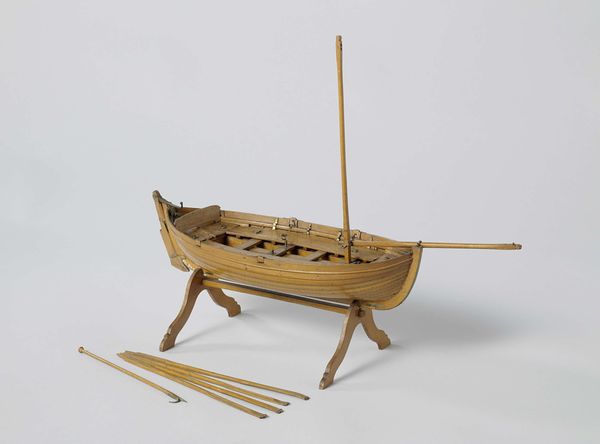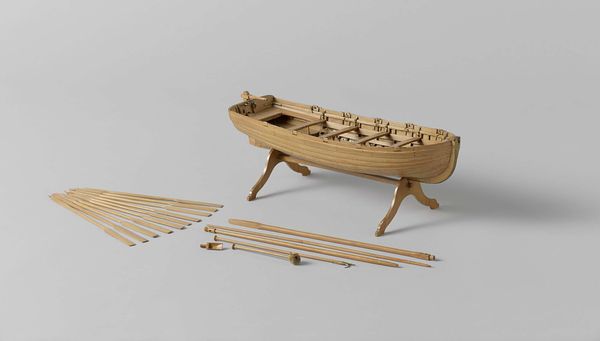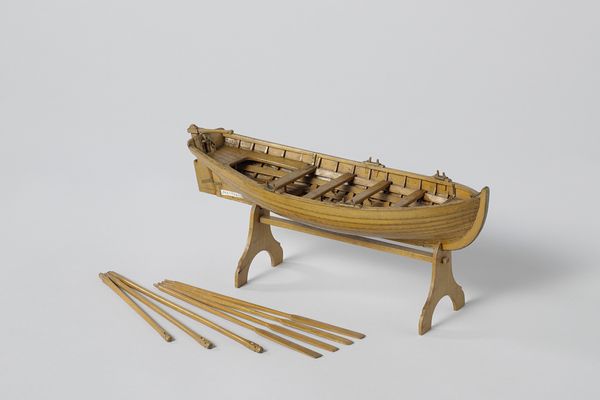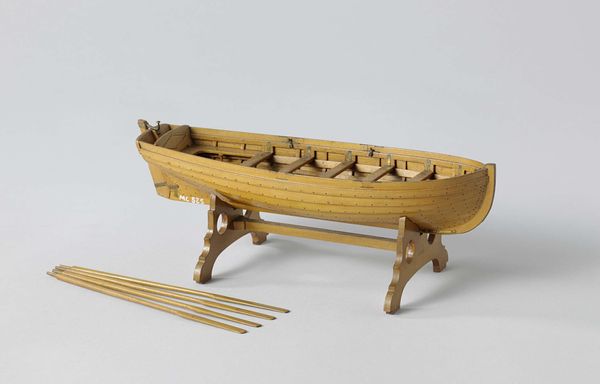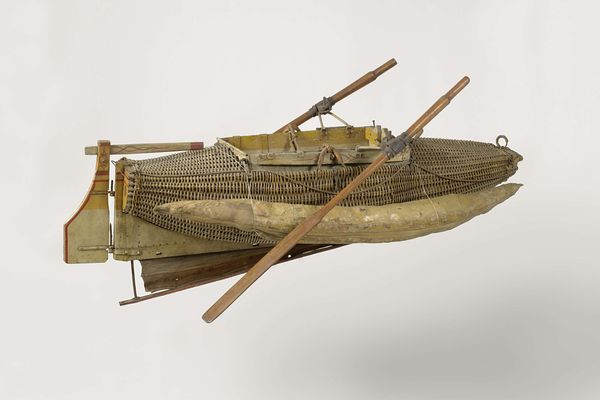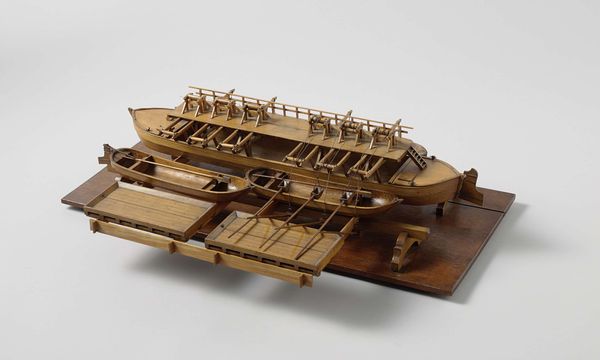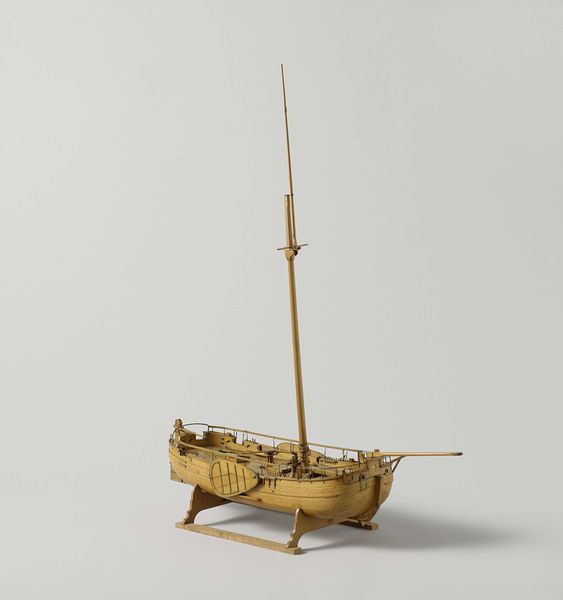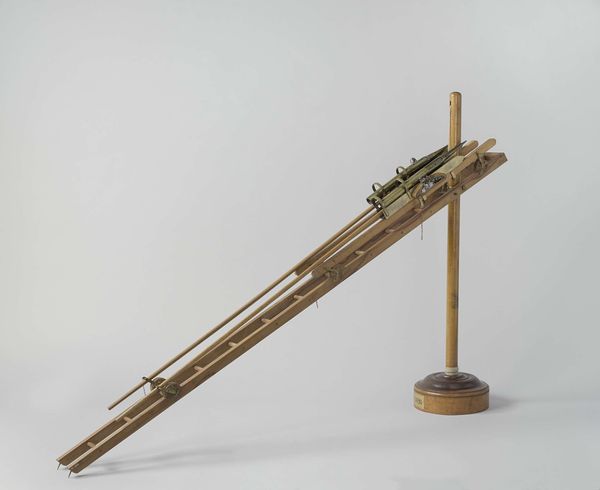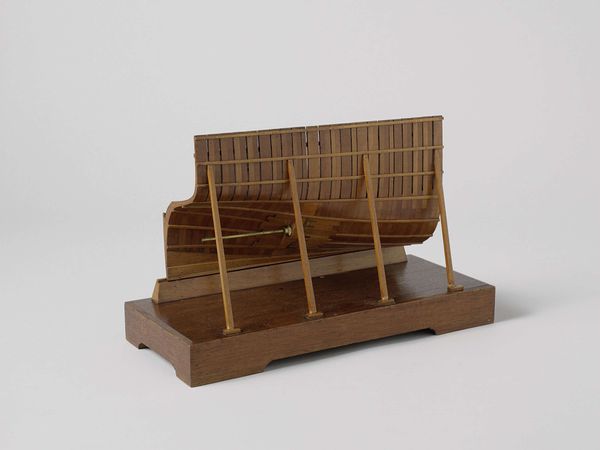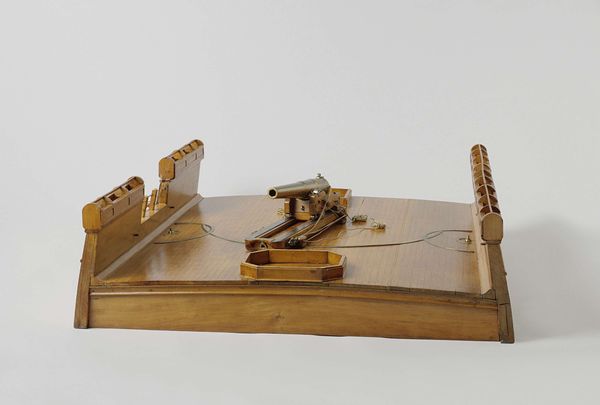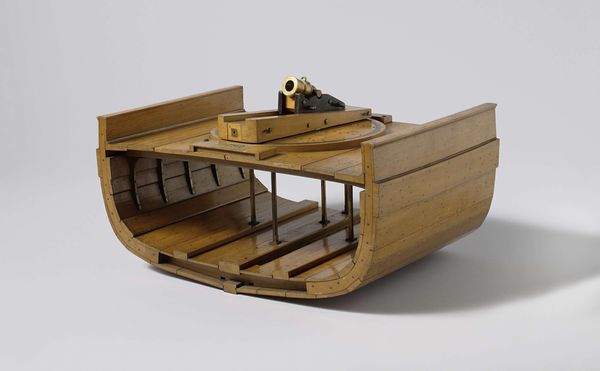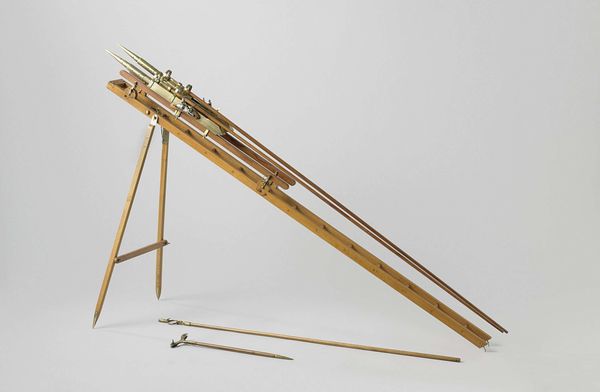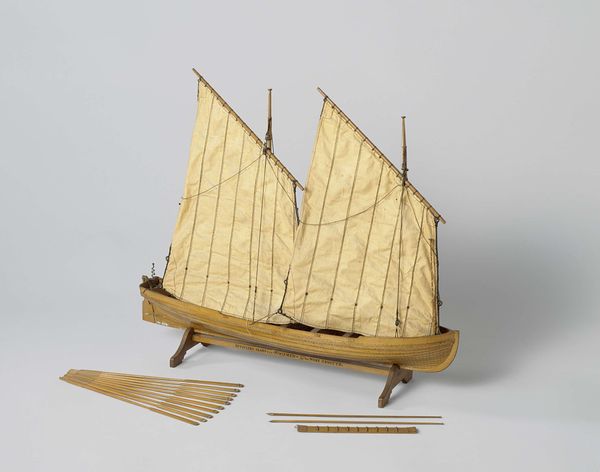
sculpture, wood
#
geometric
#
sculpture
#
wood
#
academic-art
Dimensions: model height 37 cm, model length 38 cm, model width 10.7 cm, packaging capsule height 17.5 cm, packaging capsule width 43.5 cm, packaging capsule depth 52 cm
Copyright: Rijks Museum: Open Domain
Curator: This elegant object before us is a wood sculpture known as “Model of a Launch," dating from around 1819, and thought to have been created by Rijkswerf Rotterdam. What are your immediate impressions? Editor: Stark elegance, almost severe. The clean lines of the wooden hull against the emptiness of the background project both serenity and an air of unfulfilled purpose. It's a strange duality. Curator: A key aspect to appreciate here is the meticulous nature of the build. Note the repetition of structural lines across its skeletal framework. The geometry and craftsmanship speaks volumes about shipbuilding knowledge. The colour palette is certainly restricted. Editor: True, but restricting it solely to “shipbuilding knowledge” does this model injustice. This sculpture transcends pure functionality; a powerful statement in a period defined by the industrial revolution and naval expansion. Was this, perhaps, a commentary on maritime ambition and power struggles? Curator: Well, its formal elements, from the rawness of the unvarnished wood to its simplistic aesthetic and proportions, certainly don't convey grand ambitions; perhaps a deliberate stripping-down of overt naval displays? What are the potential links with broader social developments in the Netherlands at the time, do you think? Editor: Intriguing concept. Perhaps this stark portrayal challenges traditional perceptions of nautical power. Dutch shipbuilding was obviously fundamental to global trade and influence. Yet, this "Launch," while undeniably representative of sophisticated skill, seems muted and austere, lacking ornamentation. This, I believe, could suggest a deliberate rejection of pomp amidst a period of transition and socio-political discourse. Curator: Fascinating; I think the formalist perspective pushes toward function but the sculpture asks the same questions as an artwork on canvas in the broader artworld environment of the time. Editor: Yes, its construction might initially signify utilitarian naval prowess, yet its ultimate power may lie in revealing more complex ideological currents within Dutch culture during this specific period of change. What appears plain has considerable depth of intention, maybe? Thank you for illuminating the construction of its possible interpretation. Curator: And thank you for guiding us from semiotics to socio-politics.
Comments
No comments
Be the first to comment and join the conversation on the ultimate creative platform.
